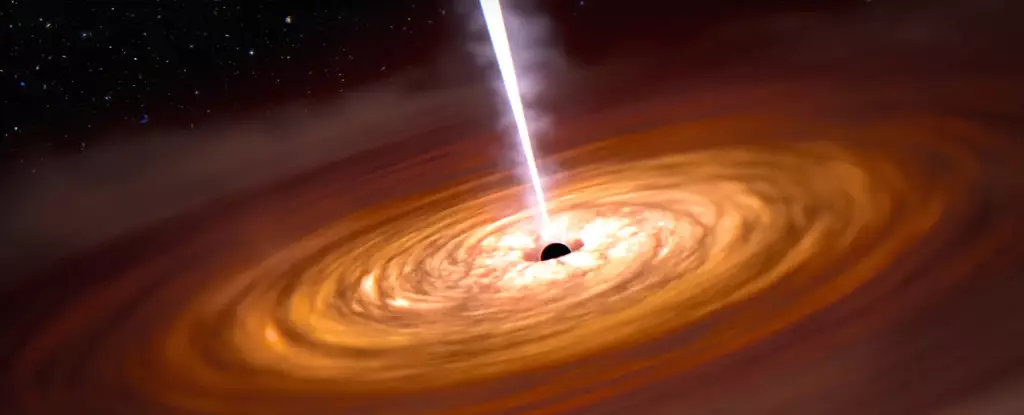Cosmic rays, high-energy particles that reach Earth from outer space, have long remained a scientific enigma. However, recent findings suggest that a small black hole known as SS 433 may hold the key to understanding the origin and acceleration of these mysterious cosmic rays. In this article, we will delve into the details of this groundbreaking discovery and explore the implications it holds for our comprehension of the Universe.
For years, scientists have grappled with the question of how cosmic rays can attain such incredible speeds. Laura Olivera-Nieto, a researcher from the Max-Planck-Institut für Kernphysik, explains that while previous studies confirmed the existence of particle acceleration, the mechanism behind it remained elusive. However, the recent observation of SS 433 has opened up a new era of exploration, allowing scientists to finally answer the “where” and “how” of cosmic ray acceleration.
Our planet exists within a vast sea of cosmic rays that traverse the Universe, carrying immense amounts of energy along with them. If these rays were to directly impact Earth, the consequences would be dire. Fortunately, our planet’s atmosphere shields us from the most destructive radiation. Nonetheless, comprehending the cosmic ray phenomenon holds immense importance, particularly as humanity ventures toward becoming a multi-planetary species.
Traditionally, when studying cosmic rays originating from quasars or supernovae, scientists have encountered significant challenges. Cosmic rays from quasars are emitted from incredibly distant sources that appear only as indistinct blobs. On the other hand, supernovae emit low-energy rays, making them faint when observed from Earth. However, SS 433, a microquasar located in the Manatee nebula, presents a unique opportunity to gain profound insights into cosmic rays.
Olivera-Nieto explains that SS 433 is classified as a microquasar due to its resemblance to larger quasars but on a smaller scale. This particular microquasar, unlike others, has exhibited jets for an astonishing 50 years. Such longevity is unparalleled, providing scientists with an extraordinary lens through which to investigate cosmic rays.
Upon analyzing SS 433, researchers made a fascinating discovery: a noticeable gap within the jets emitted by the microquasar. This gap, approximately 0.1 parsecs away from the black hole, hints at the region where particles are accelerated to nearly the speed of light. Scientists have proposed three competing theories to explain this natural particle accelerator.
The first theory suggests that magnetic field lines near the black hole carry the particles, eventually snapping and propelling them into space due to tension. In this scenario, the accelerator would be in close proximity to the black hole. The second theory posits that the black hole forms tunnels that boost particles as they bounce off the tunnel walls. However, this theory implies a gradual increase in particle speed. The observation of SS 433 favors a third hypothesis: particles encounter an invisible wall called a discontinuity, which abruptly halts their progress. The resulting energy builds up around the particles until they eventually breakthrough.
While this discovery sheds light on the mechanism of acceleration, it raises a new and intriguing question: what precisely causes the formation of the shockwave at the discontinuity? Olivera-Nieto emphasizes the puzzling symmetry of this phenomena, occurring on both sides of the particle path, suggesting a connection to the system itself. Unraveling this mystery may hold the key to unlocking the secrets of cosmic rays and their journey across the Universe.
The recent observation of SS 433 has provided scientists with an unprecedented opportunity to study cosmic rays and their acceleration process. By analyzing the unique features of this microquasar, researchers have gained valuable insights into the mechanisms behind particle acceleration. As we continue to explore the mysteries of our Universe, this breakthrough discovery paves the way for a deeper understanding of cosmic rays and their impact on life as we know it.



Leave a Reply